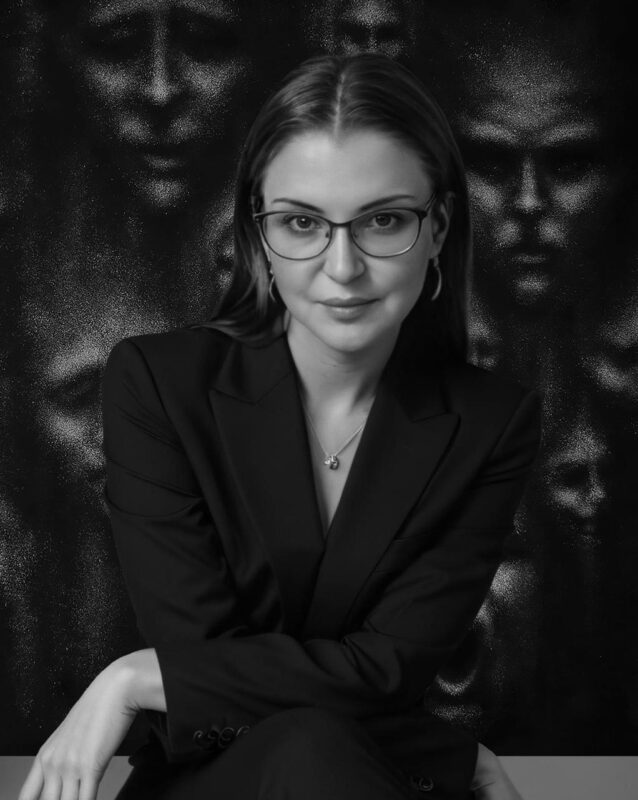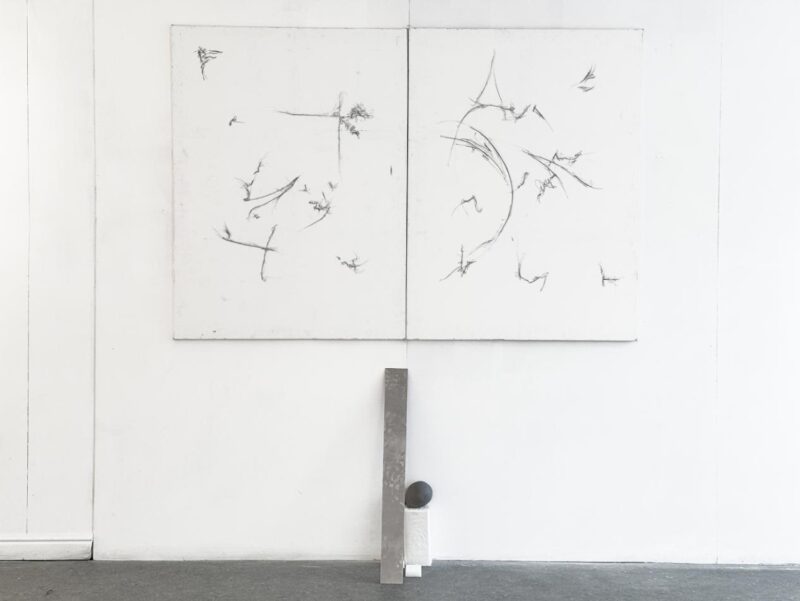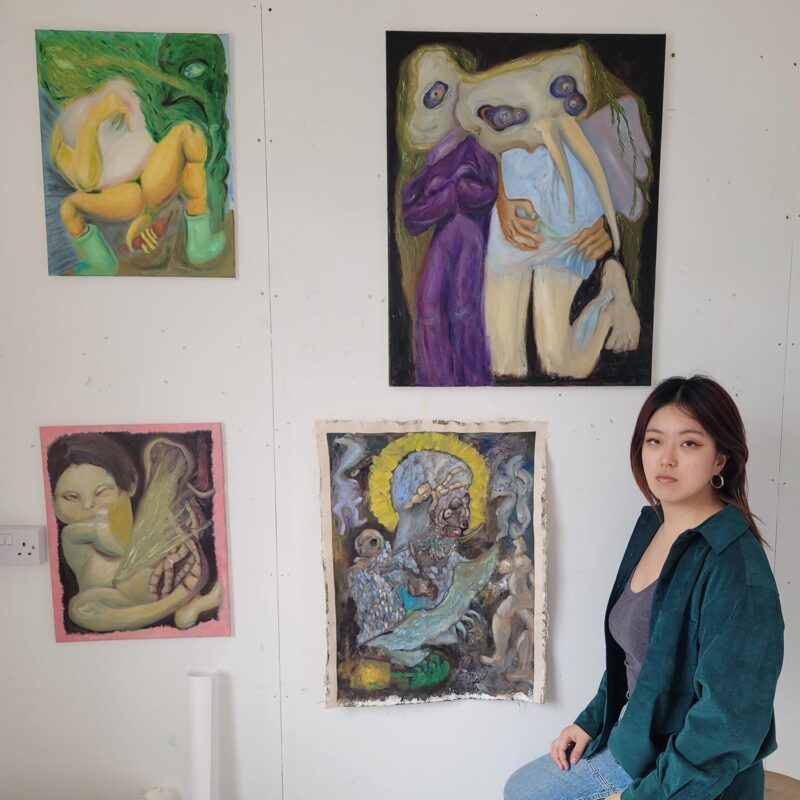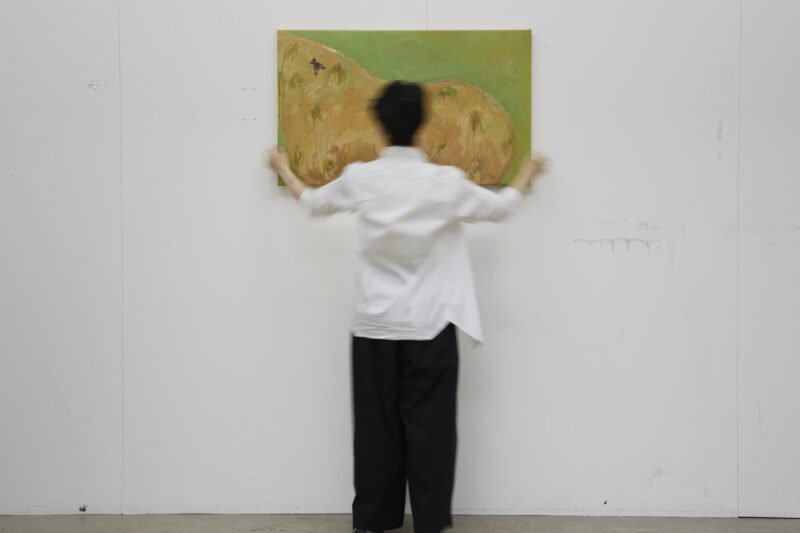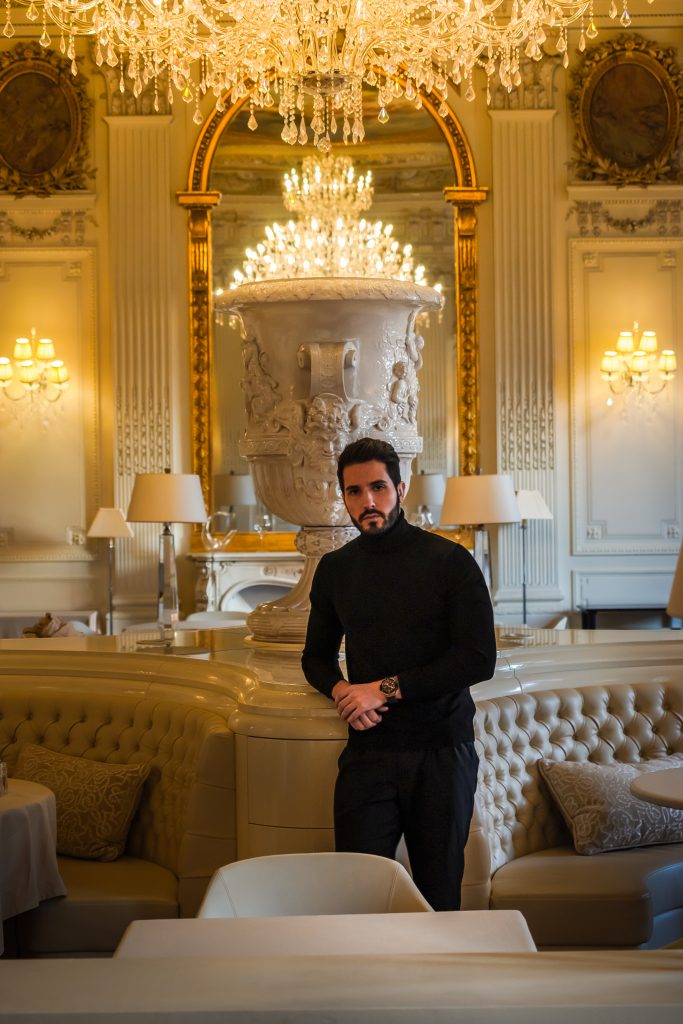
For the latest edition of ‘The Upcoming’, Lee Sharrock spoke to French sculptor Nicolas Dobkine. Dobkine studied Art History at the Sorbonne in Paris, becoming interested in anthropology and the representation of human beings throughout the history of art. A self-taught sculptor, Nicolas created a monumental aluminium sculpture, named ‘Demiurge’ (definition: a being responsible for the creation of the universe). ‘Demiurge’ is for sale via Saatchi Art and combines Dobkine’s anthropological and art historical learning with Pop culture references such as Daft Punk, Marvel’s ‘Silver Surfer’ and Fritz Lang’s 1927 German expressionist film ‘Metropolis’. Here he talks about “The transhumanist revolution”, nanotechnologies and AI emerging as the biggest creation of the 21st century.
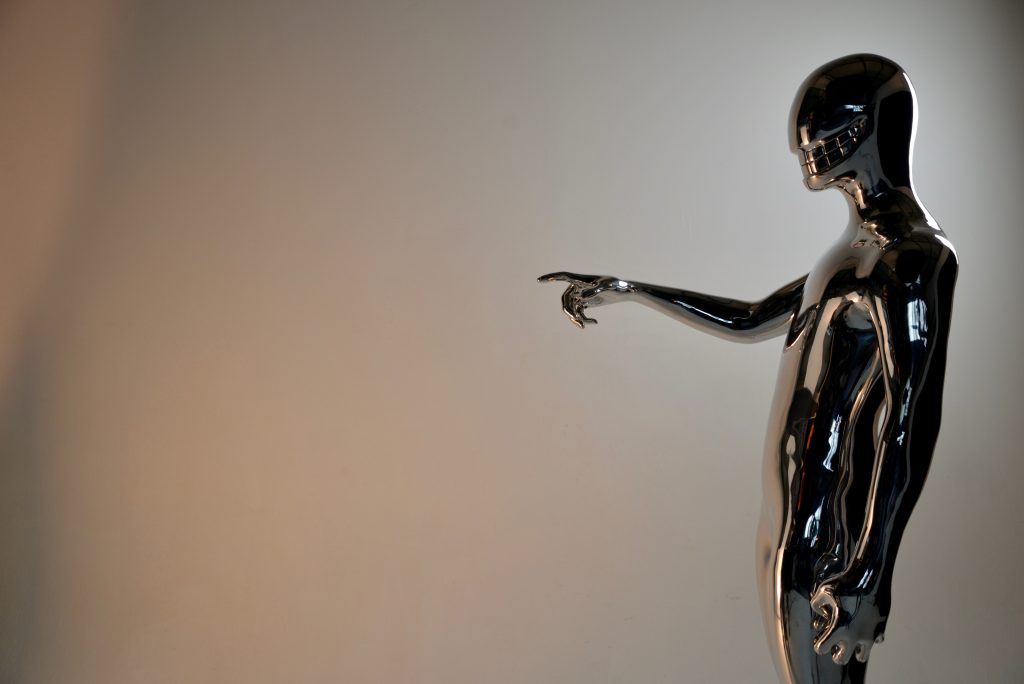
Lee Sharrock: You have said that you started working on your series ‘Human Condition’ when you were 22 years old. Can you talk a bit about that series and the inspiration behind it?
Nicolas Dobkine: After having studied art history at the University of Paris: Sorbonne, I decided to embark, as an autodidact, in an in-depth study of the human being. This study encompasses sociology, anthropology, philosophy, psychoanalysis, ontology, and phenomenology. It took me around 5 years to structure the series (Human Condition), and I still work on it every day to perfect it. As a former student of art history, I understood the importance of meaning in art, particularly through the study of iconology. Each century has artistic representations and I wondered what ours would be. I was then examining thuman behavior and its evolutions. I believe that it is a relatively unexplored and little exploited theme in the art of the XXIst century, in favor of a superficial and purely decorative art. I think it is fundamental to work around what the human being is and what he/ she becomes – even more so in recent decades with the mutation of ideals, identities, beliefs and schemes of thought. I hope to be able to realize the whole series, and thus reveal what we do not perceive of ourselves: our condition. So, I decided to merge the two: Art and Knowledge.
What age were you when you became interested in art, and was your interest inspired by your parents being involved in the art world with their pop-up gallery in Paris?
I first becamse interested in art when I was 14: I loved drawing, even though I was not particularly good. I later wanted to go to a drawing school, but my father dissuaded me from it because of the uncertainties of becoming an artist as a profession. I was not at all influenced by my parents, because their pop-up gallery was only opened in 2017. I have always felt the urge to draw or create. I did not have the opportunity to learn drawing, so I started to create with my mind and then using 3D printing technology.
You studied art history at the Paris Sorbonne and call yourself a self-taught artist. How did you learn about sculpture, and did you make your sculpture Demiurge yourself or work with a modelling company like many of the big-name contemporary artists do such as Hirst and Koons?
I studied the history of sculpture at university for only a few months. I did not learn anything concretely about sculpture at the university. They are two totally different worlds. It is a work of research, dozens of meetings with foundry workshops, with dozens of companies from 3d prints. I had to learn by myself how to make a sculpture, by what means, with what material etc. Making ‘Demiurge’ involved hundreds of hours of brainstorming. I had awfully bad experiences at the beginning with dishonest people who make you believe in such and such a thing at such a price. When you start you must become as knowledgeable as possible about the process so as not be fooled! So yes, I finally made the Demiurge sculpture in collaboration with a modelling company.
Your sculpture is named ‘Demiurge’, defined as ‘a being responsible for the creation of the universe. The Maker or Creator of the world. A heavenly being, subordinate to the Supreme being, that is considered to be the controller of the material world and antagonistic to all that is purely spiritual.’ In press materials I’ve read the figure is described as a man. Was that your intention, and if so why did this metaphorical maker of the world have to take a male form, or could you say it’s androgynous?
The intention was to represent the first human condition by referring to the idea of Creation: Human beings are the creators of the world in which they live. Our ideals, our beliefs, our societies, our aspirations, our systems of representation, our wars, our technologies, our languages, our desires, our fears: everything comes from the human being. I am glad you asked the question because it is not about a man but about a human being neither man nor woman, because we are all subject to the same laws.
Although ‘Demiurge’ is named after the creator of the world, so in other words a god-like figure, I get vibes of Daft Punk and Fritz Lang’s 1927 German expressionist film ‘Metropolis’ because of the sci-fi robot aesthetic of your sculpture. Do you find inspiration in film and music as well as in art history?
There is no particular inspiration from a movie or music, but I think it is possible that unconsciously, I was able to project subconsciously into my production elements of films or cartoons that I have seen throughout my life.
There have been countless books and films over the years on the topic of robots taking over, including H.G. Wells’ ‘War of the Worlds’, which was so prophetic and it’s hard to believe it was written back in the 19th Century (1897). When I look at an image of your ‘Demiurge’ sculpture, I think of this quote from ‘War of the Worlds’ about the existence of an intelligence greater than mans’:
“No one would have believed in the last years of the nineteenth century that this world was being watched keenly and closely by intelligences greater than man’s and yet as mortal as his own; that as men busied themselves about their various concerns they were scrutinised and studied, perhaps almost as narrowly as a man with a microscope might scrutinise the transient creatures that swarm and multiply in a drop of water.”
H.G. Wells’ theme has been revisited in film and on TV many times since then, and the human race are increasingly preoccupied with advancing technologically with the use of AI. The scale and pose of ‘Demiurge’ makes me think of an AI creator or robot demi-god. In a New Statesman article of February 2021 titled ‘How to prevent AI from taking over the world’, the writer talks about ‘if we can’t teach machines to internalise human values and make decisions based on them, we must accept – and ensure – that AI is of limited use to us.”
Do you feel that your sculpture is in any way a reference to the increasing dominance of screens, AI and machines in our lives?
I read a book by Luc Ferry on “the transhumanist revolution”, which also deals with the emergence of Artificial intelligence. It is a growing phenomenon that takes up more and more space every year, especially with nanotechnologies which, in my opinion, are the embryos of AI. ‘Demiurge’ speaks of the human being-creator. Once again, AI is a specifically human creation that is gradually becoming part of our lives without even being aware of it. ‘Demiurge’ therefore incorporates in its representation this creation specific to the human being that is technological progress and AI. The creation of the AI perfectly illustrates the idea behind ‘Demiurge’, insofar as AI is and will be the biggest creation of the 21st century and maybe of all time. I see my ‘Demiurge’ sculpture as the symbol of the new God-creator of the twenty-first century, like the representation of the God-creator of the sixteenth century by Michelangelo. I am trying to modernize and re-invent this concept of God in our time.
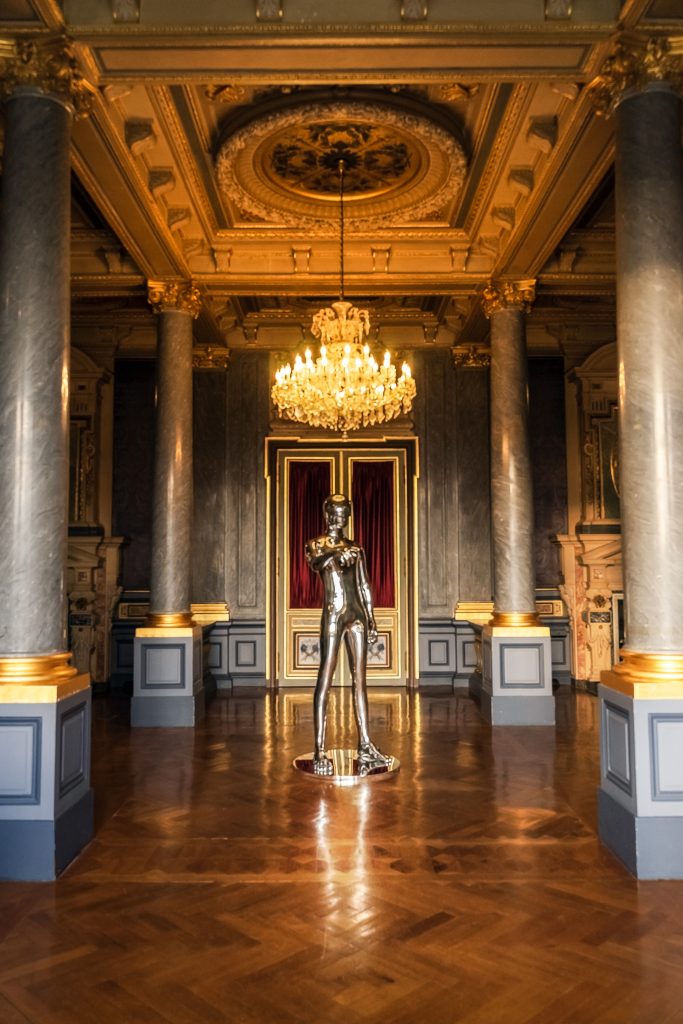
You found an unusual way of displaying ‘Demiurge’ during lockdown, by positioning it in different situations outdoors in France, for example by the Eiffel tower and at a French Chateau. Are there any plans to take ‘Demiurge’ to other countries?
I wanted to do a stunning photoshoot in Amazonia to conclude before the production of “Stage II”. But because of the health crisis in Brazil, unfortunately, I cannot. I will still be doing a pretty cool photoshoot in a magnificent forest in France in the coming weeks!
Did you make the sculpture during lockdown, how long did it take, where did you make it, and what was the process and materials used?
I made the sculpture just before the confinement. The production lasted around 4 months, from September to December 2019. I worked in collaboration with a 3D printing company and a foundry in the south of France. It was first necessary to carry out the drawing, then the 3D modeling, the 3D printing then the cast with aluminum.
How did the collaboration with Saatchi Art happen? – did they approach you to sell the sculpture on the site, and who decided on the price point of $110,000, as that’s quite high for a young artist.
This is firstly a single, unique one of a kind piece in the world (from the aluminum series) with a height of 240cm which required a lot of manual work, especially concerning mirror polishing. Plus the production price is very high which explains the selling price.
The editor of FAD asked if you were inspired at all by the Marvel character Silver Surfer?!
Everybody asks me this question! Sometimes they ask me about RoboCop too! Unfortunately, I was not at all inspired by the Silver Surfer! I wanted to make ‘Demiurge’ in Bronze polished mirror but was not able to because of the price which is way much higher. I do not regret it; this is absolutely an amazing material. All I can say is, at the end, there will be an aluminium series and a bronze series (I know then I will be asked if I’m inspired by C-3PO from Stars Wars !!)
saatchiart.com/art/Sculpture-Demiurge

